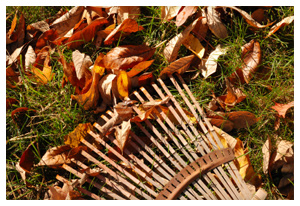 There is much debate about the best way to winterize a lawn because of the differences between cool-season grasses and warm-season grasses. Lawns in warm climates will benefit from higher doses of potassium in the spring and fall because the high temperatures can stress the grass. Winterizer fertilizer is designed for fall application on cool-season grass lawns, such as bluegrass and fescue. There are a number of benefits realized by fertilizer to the lawn in late October or early November, depending on the latitude.
There is much debate about the best way to winterize a lawn because of the differences between cool-season grasses and warm-season grasses. Lawns in warm climates will benefit from higher doses of potassium in the spring and fall because the high temperatures can stress the grass. Winterizer fertilizer is designed for fall application on cool-season grass lawns, such as bluegrass and fescue. There are a number of benefits realized by fertilizer to the lawn in late October or early November, depending on the latitude.
Reasons for Fall Fertilizer
Stress caused by very cold temperatures and extreme moisture conditions can kill the roots that support a cool-season lawn. Timing of the application of the lawn fertilizer is important because sufficient lead time is required prior to the ground freezing. Applying sufficient fertilizer prior to the first heavy snowfall will benefit the grass in the following ways:
• Root growth – Higher levels of potassium in winter fertilizers will strengthen the entire plant and cause roots to grow more quickly. Winter is the best time for roots to grow deep and strong to support grass blades that will be stressed by sunshine and drought throughout the summer months.
• Weed control – Pre-emergent weed killers are included in some mixes of fertilizer. Weeds that have not yet sprouted will be prevented from growing in the spring. Consistent applications of weed-control agents will reduce the occurrence of weeds in the lawn, which leaves nutrients in the soil for the grass blades.
• Food reserve – Roots will store additional nutrients to support growth in the spring. The lawn will turn green earlier because of the presence of sufficient food in the soil and roots. Nutrients are absorbed immediately after the fertilizer is applied because of the water applied.
Leaves and thatch must be removed from the lawn to allow the fertilizer to reach the soil. After removing the debris, one final pass with the lawnmower will create uniform height that will look neat and allow the grass to stand up through the winter. If the soil has become compacted throughout the summer, aerating the lawn will allow the fertilizer to penetrate the soil surface.
Apply Correct Fertilizer
Many winter-formula fertilizers have been developed to address the nutritional needs of the lawn. Some research will be required to determine which composition is best for local use. National retailers will carry major brands, and local nurseries will offer more specialized products. The following points should be considered in the choice of fertilizer.
• Fertilizer only – If the lawn is free from weeds, fertilizer can be applied to the entire lawn surface. Avoid spreading the granules on cement and in flowerbeds.
• Fertilizer plus weed-killer – When weeds are present in the lawn, choose a fertilizer that contains weed killer. Apply this formula when two consecutive 50-degree days are in the forecast. Warmer temperatures allow the weed-killer to work.
• Nitrogen – Slow-release nitrogen is an important nutrient in winter fertilizers because of the benefit each grass plant will receive from this growth-triggering element. Research has shown that fertilizers without any nitrogen will not produce the best results in the sprint. In sandy soils,
 • Potassium – Winter-formula fertilizers have very high levels of potassium because this nutrient strengthens the entire plant. The ability of each plant to handle extreme temperatures will ensure that the lawn is healthy in the spring. Soil tests will reveal how much potassium is necessary to support the lawn by revealing potassium-depleted soil.
• Potassium – Winter-formula fertilizers have very high levels of potassium because this nutrient strengthens the entire plant. The ability of each plant to handle extreme temperatures will ensure that the lawn is healthy in the spring. Soil tests will reveal how much potassium is necessary to support the lawn by revealing potassium-depleted soil.
• According to instructions – Every fertilizer is designed to achieve results when applied to the instructions printed on the bag. Specially-designed spreaders must be used to apply the fertilizer to the grass in an even pattern. When the manufacturer instructions are followed, the company will stand behind the product.
• Water the lawn – Some modern winterizing fertilizers do not require watering. If the instructions on the bag recommend watering the lawn after applying the fertilizer, water appropriately and then drain the hoses or sprinkler system.
Final Evaluation
With so many opinions about the best methods to feed a lawn in the fall, one of the best ways to get superior results is to speak with a local expert. The neighbor with the prettiest lawn on the block is doing something right because of the visible results. Fall lawn care requires some time when the weather is less than favorable for doing yard work, but the effort will save a great deal of time in the spring. During the following summer, the grass will be more heat and drought-tolerant. The result is a beautiful lawn without extensive effort in the spring. Summer-formula fertilizer can be applied in the spring to feed the lawn prior to the arrival of very hot temperatures. Throughout the summer months, less water will be required to sustain the healthy lawn that has been given sufficient nutrients.

